Early Verdict
If this product is on sale, it is worth considering. The X370GT7 falls short in the flair department compared to its competition, and is priced a little too high for the basic X370 features it provides.
Pros
- +
Great performance
- +
Just enough RGB
- +
No nonsense wiring configuration
Cons
- -
Clunky Overclocking
- -
Memory compatibility in full configuration
- -
Lack of polish in applications
- -
Price
Why you can trust Tom's Hardware
Features & Specifications
Long ago, in the age of AMD Athlon XP 1800+, I fell victim to the “don’t buy Biostar" mantra spinning in various enthusiast communities, and for whatever reason, despite never having owned a Biostar motherboard, I’ve maintained that stance. In the meantime, various media outlets and reviewers have given Biostar products various awards.

With an open mind and a little bit of wisdom under my belt, I welcome the chance to review the Biostar X370GT7 with our Ryzen test rig. Will Biostar’s X370 offering vindicate the company's offerings in my mind? Let's find out.
Specifications
Features
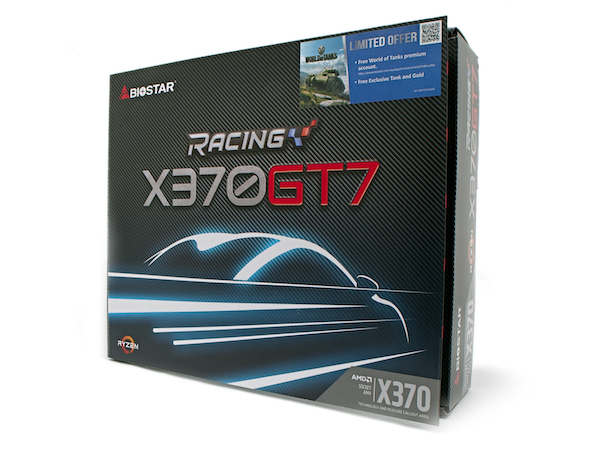
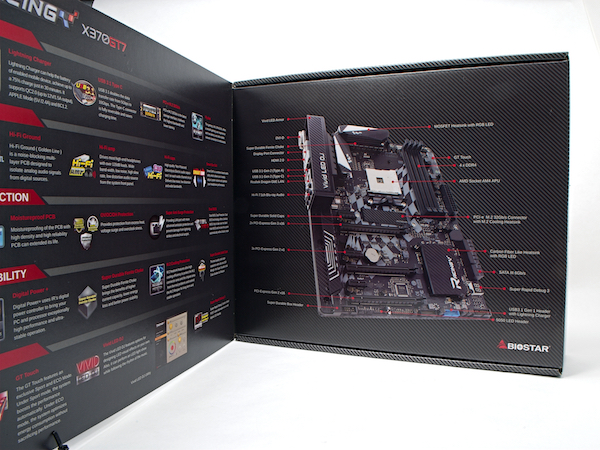
Biostar’s X370GT7 comes from its Racing lineup and dons a carbon fiber graphical texture across the box that is just small enough not to clutter the packaging. In an attempt to replicate a hood, the GT7 box opens like a large Calvin & Hobbes book, providing ample feature descriptions and a high-quality diagram of the board and its connectivity options. Though we appreciate the text being diverted from the back of the box, some of the descriptions are oddly worded and repeated across several sections. We enjoy the clarity of the items described on the back and product table but we have to nitpick that including the back-panel diagram dominates valuable space that could have been used to enhance the layout.
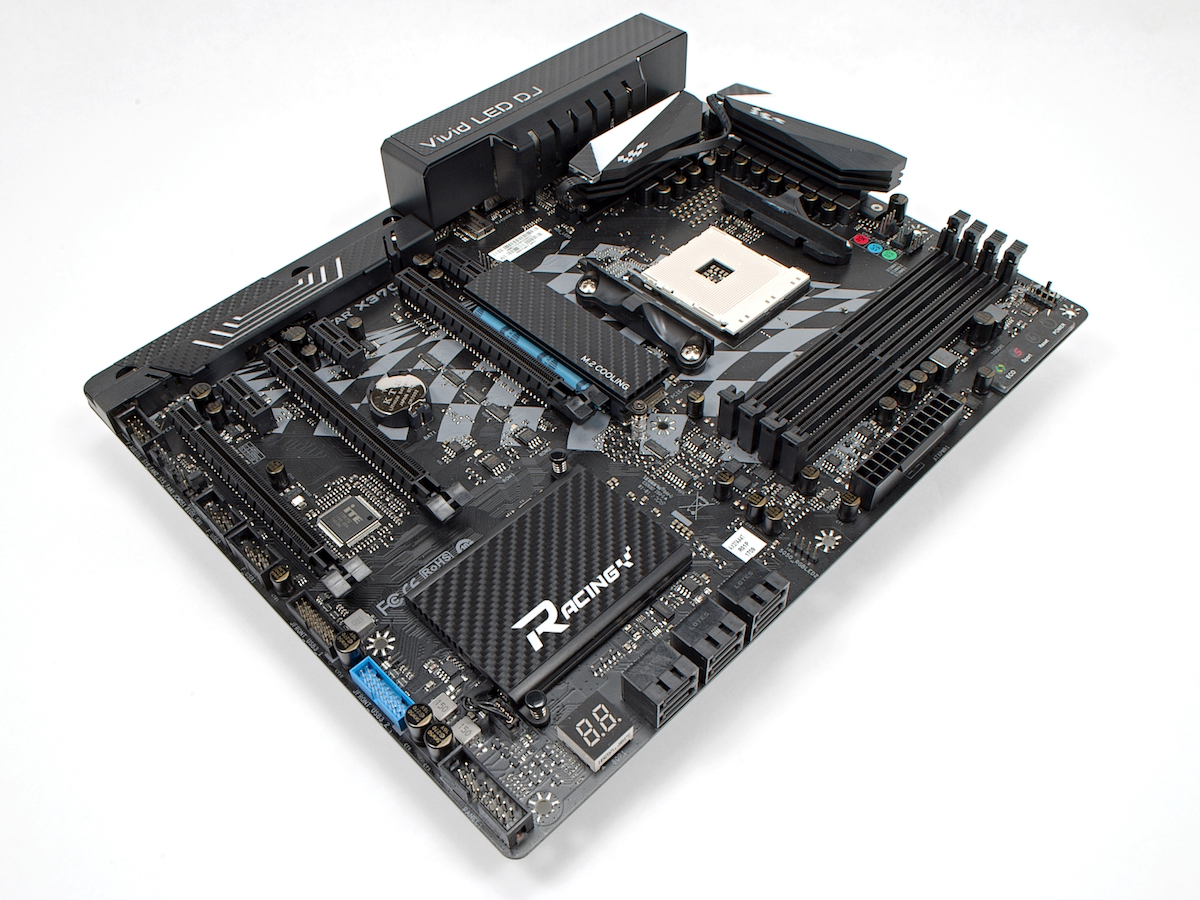

Contents of the box are . . . different. Rather than stick to the basics or include things like twist ties and stickers, Biostar includes a 120mm LED fan. This product is not featured on its site, nor is the supplier marked on the fan, but it appears to be a non-PWM Apevia AF312L-SBL variant that provides 5050 LEDs, anti-vibration pads, and is powered by either a motherboard fan header or ATA drive plug. Though we don’t need an extra fan for our rig, this is an easy way for aspiring RGBers to get an entry level fan with programmable lighting.
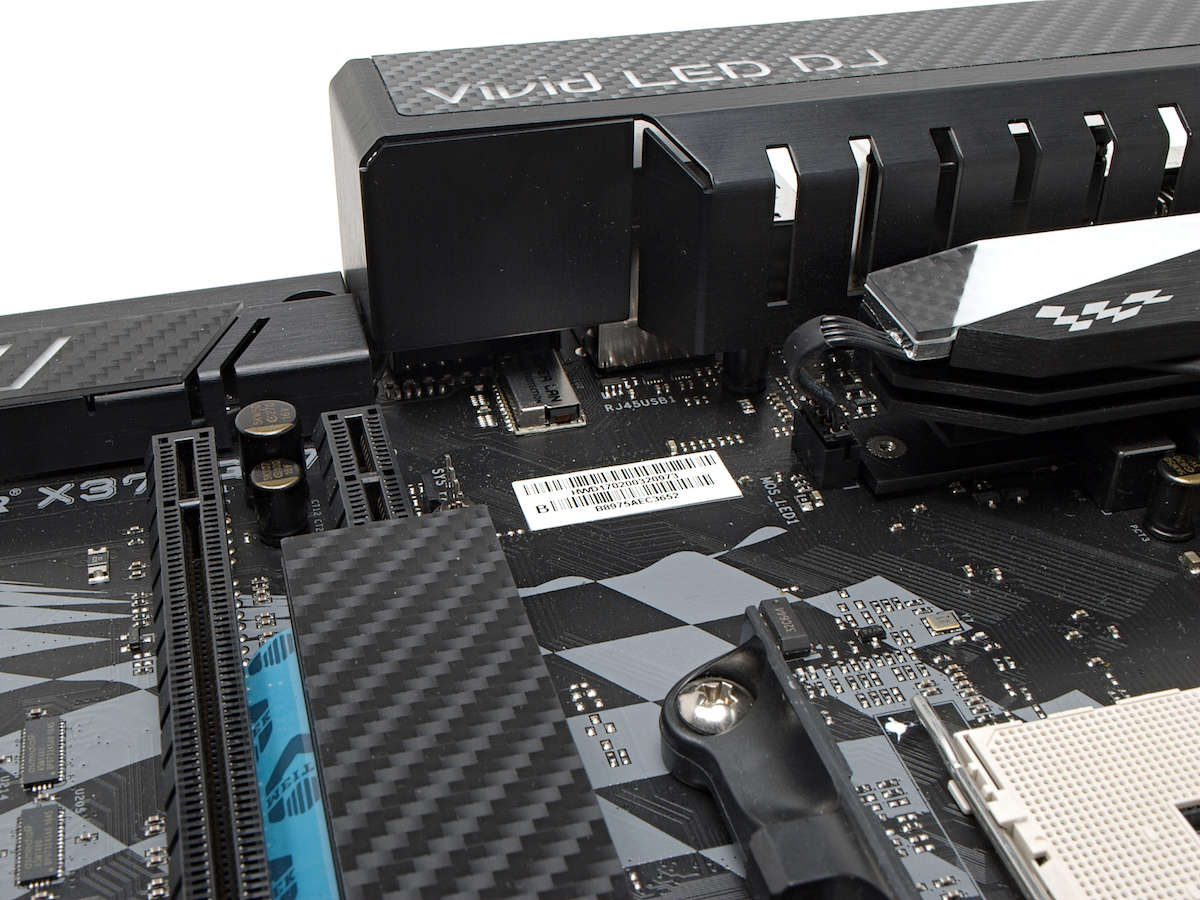
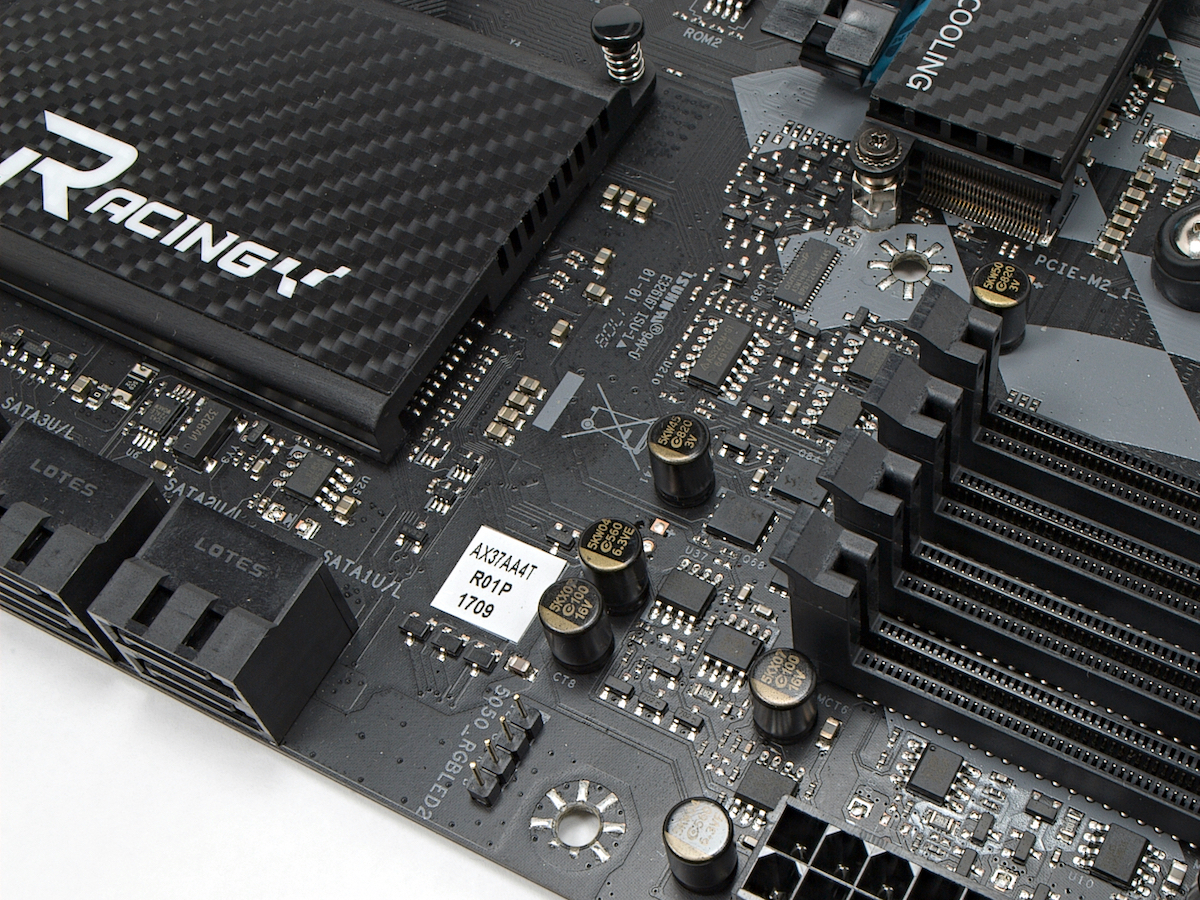
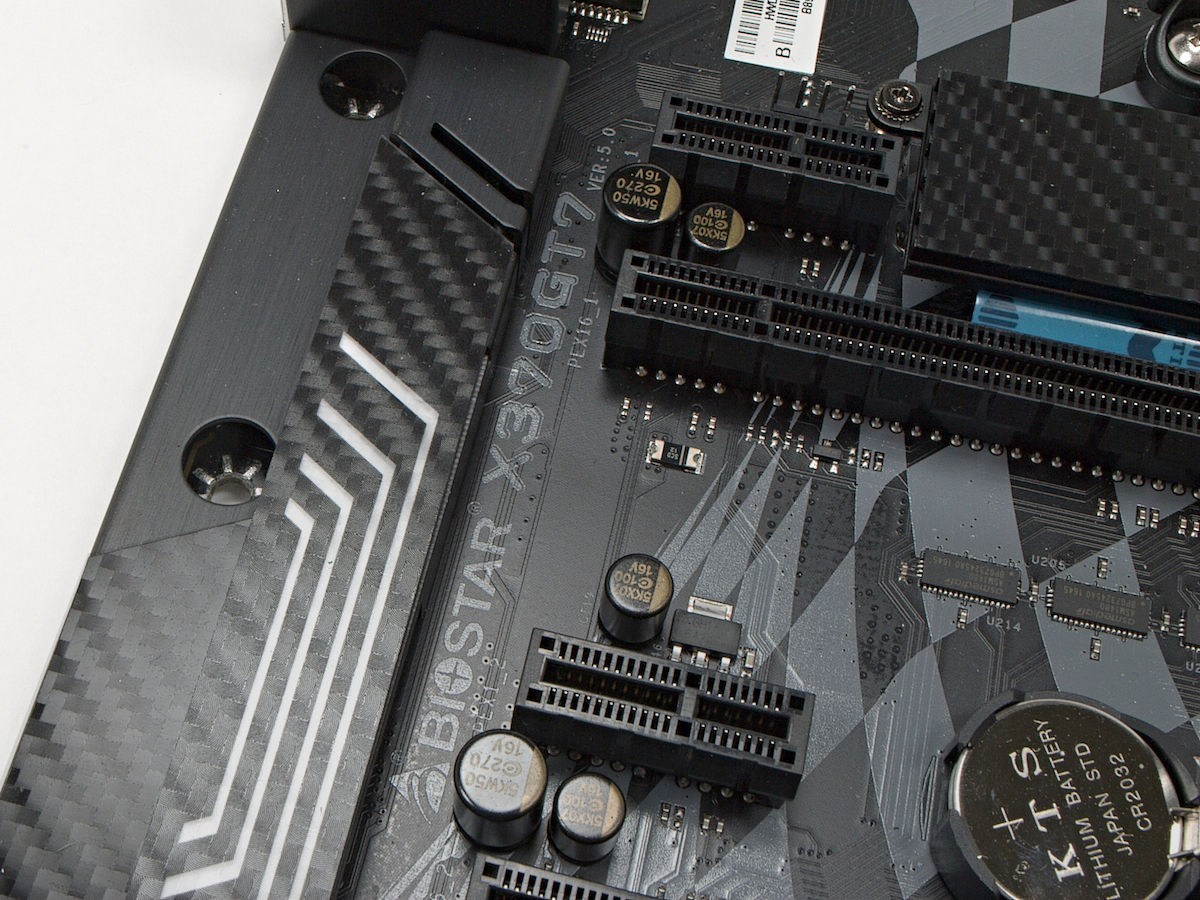
Slicing open the anti-static bag reveals our carbon fiber clad motherboard, complete with checkered flags on the heatsinks and across the planar. Lighting effects are subtle yet effective, with blue lights emitting from the Vreg heatsinks, IO guard, audio panel, and promontory heatsink that match perfectly with my Gigabyte GTX 970 G1 Gaming card. We would have preferred a cleaner wiring method for the heatsinks so that the cables aren’t draped across a very noticeable chunk of real estate. Two additional RGB ports are available on board to further enhance lighting effects through the company's Vivid LED tools.
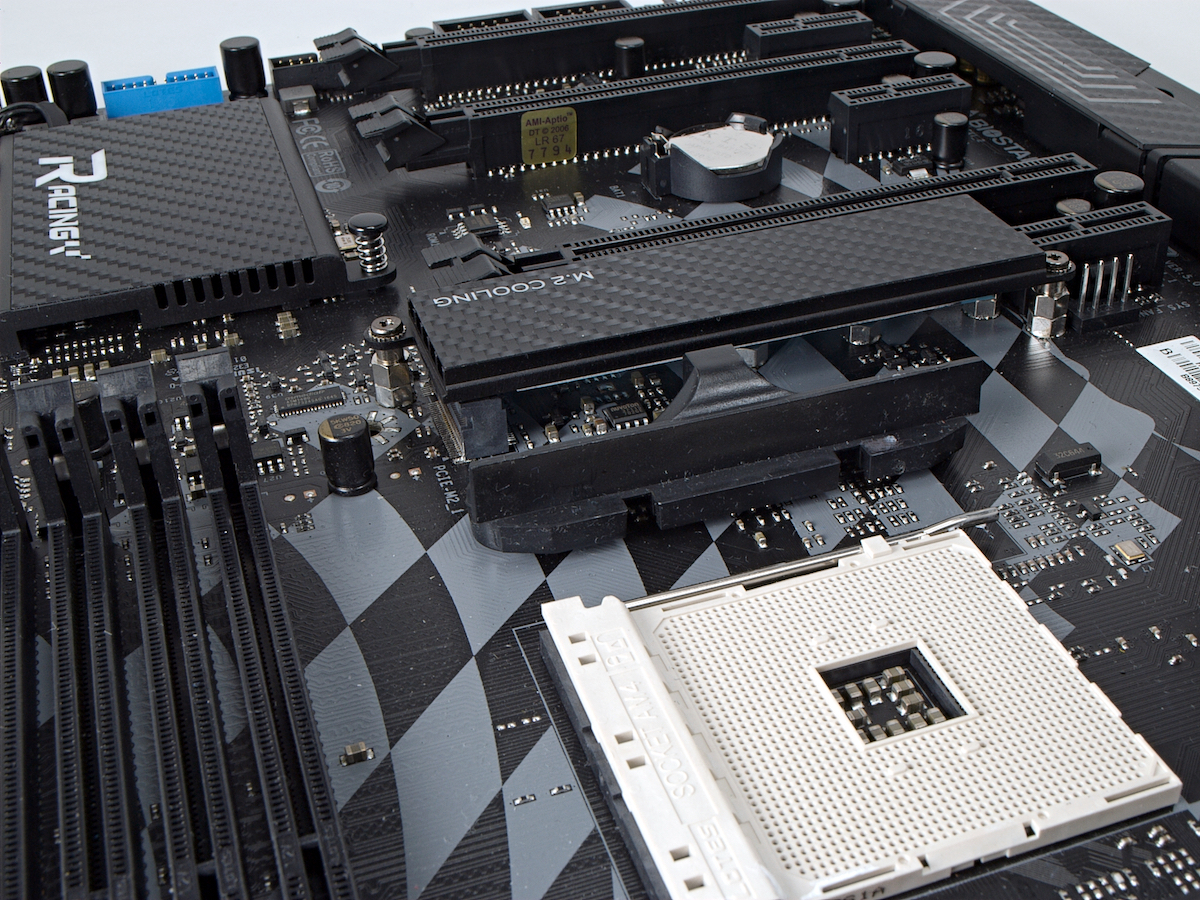
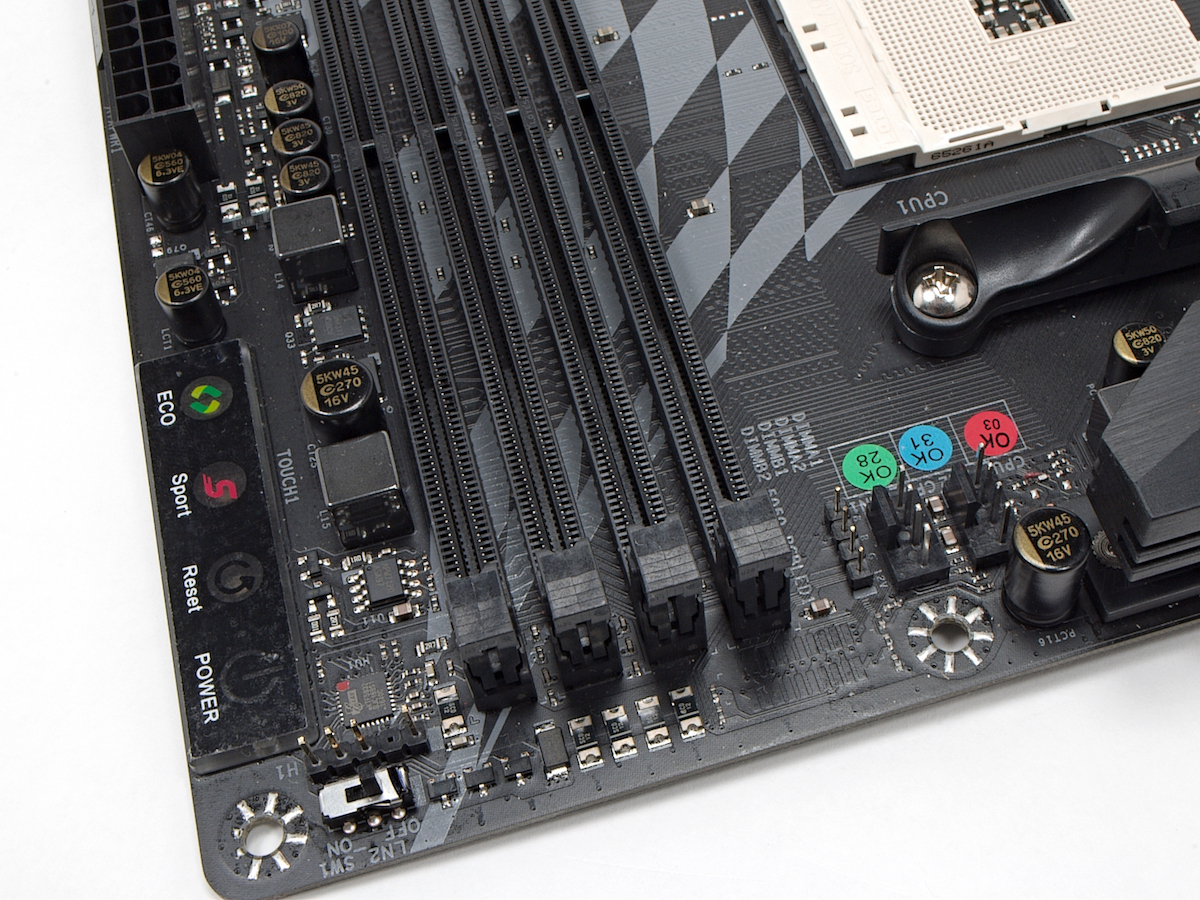

We left Biostar’s M.2 cooler off for testing. We’ve read conflicting reports regarding attaching M.2 heat spreaders so we recommend running M.2 solutions the way the manufacturer delivers it. If the spreader is installed, it is fastened to the motherboard by two screws to ensure contact to the device. The GT7 provides a unique capacitive button board in place of standard switches and buttons for open case builders, though it would have been nice to be able to deactivate or change the color of the backlights. An LED Debug3 display is provided on the bottom right of the board for quick diagnosing of UEFI issues.
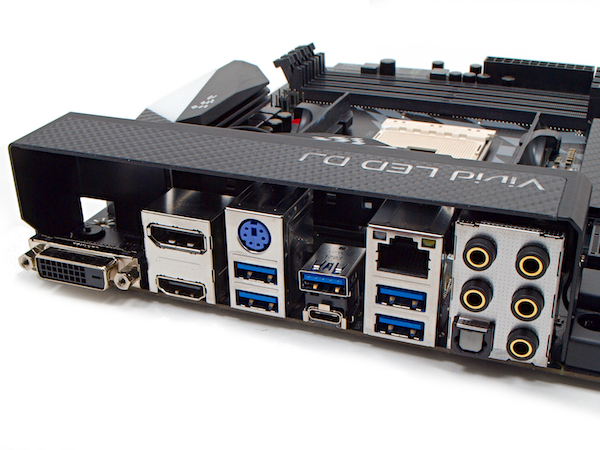
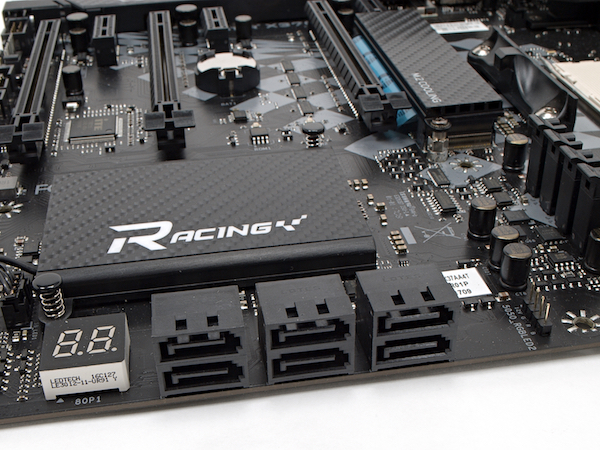
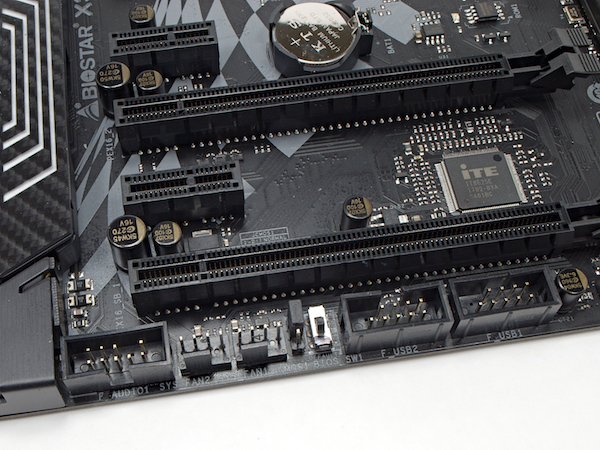
Outside of aesthetics and a couple board enhancements, this offering is as close as it gets to a reference motherboard design. Five analog audio, one SPD/F, gigabit Ethernet, four USB 3.1 Gen1, two USB 3.1 Gen2 (Type C and Type A), and a single PS/2 port are available to the back panel. DVI-D, HDMI 2.0, and DisplayPort enable video output when using an APU. Two PCIe Gen3 x16 ports (x16 or x8/x8) are powered by the Ryzen chip and the bottom x16 port is wired out for PCIe Gen2 x4 connections. Three PCIe Gen2 x1 ports are provided for additional IO, and these ports do not share bandwidth with any of the other devices--a plus when compared to some other competitors.
The M.2 device is wired for PCIe Gen3 x4, which is compliant with NVMe requirements, but nowhere in the documentation does NVMe get listed. Six SATA 6Gb/s ports can be configured with RAID 0/1/10 through the X370 chipset, and five 4-pin fan headers are sprinkled across the board for cooling. Four single-hinged DDR4 slots are provided, similar to the ASRock boards we’ve reviewed.
MORE: Best Motherboards
MORE: How To Choose A Motherboard
MORE: All Motherboard Content
-
logainofhades I used to use nothing but biostar, in the AM2/AM2+ days. They were great boards, for the money.Reply -
Michael Dahlin Only had problem with one Biostar mobo. It was a G41-M7 the capacitors smoked right next to the pcie slotReply -
Quaddro Always using biostar since 790 series..880, and 990.Reply
All dead due to bad PWM controller.. -
s4fun The only motherboard company I'd absolutely avoid is ECS. Let them supply the crap boards to HP, Dell, e-Machines, Gateway etc. I only bought biostar when I wanted a basic board with no fuss. They must be trying to move up market.Reply -
logainofhades Reply19808151 said:The only motherboard company I'd absolutely avoid is ECS. Let them supply the crap boards to HP, Dell, e-Machines, Gateway etc. I only bought biostar when I wanted a basic board with no fuss. They must be trying to move up market.
The ECS K7S5A was a great board, back in the day. They never did repeat that success, sadly. -
Calculatron I have been keeping on eye on Biostar for the last couple years, because they have been doing a lot to adapt to the market and change their image. It's been a struggle for them, because they've always been known for their budget solutions, so often get snubbed by enthusiasts.Reply
It's nice to see their efforts bear some fruit for the mainstream - more competition is never a bad thing. -
WyomingKnott One nit to pick: "The GT7 also includes Infineon’s PowIRstage IC, which is reported to increase response time within the voltage regulator circuit, reduce regulator temperature, and provide up to 60A of power delivery from each phase."Reply
Increasing response time would not be desirable; did you mean decreasing response time / increasing responsiveness?
Otherwise, it's good to see a brand come back from poor quality. I look forward to the day a CoolerMaster PSU gets a recommendation. -
Peter_256 Not sure what you consider basic x370 here. usb c included on all x370's? lightning charger ? dual bios? debug led? power on / reset buttons on the motherboard?Reply
led headers? the fan headers? alc1220? better power delivery? (news flash. am4 power delivery isn't usually this good)
then we get to "flair" First you say it has extra flair, then you state it falls short in the flair department. Maybe they needed to add some case stickers, or a lollipop?
or some of the above mentioned features are 'flair' done better or equally well by less expensive competitors?
100c overnight. One word for that. Not Genius... starts with M